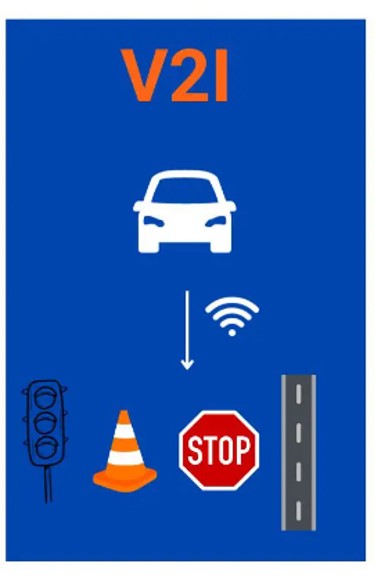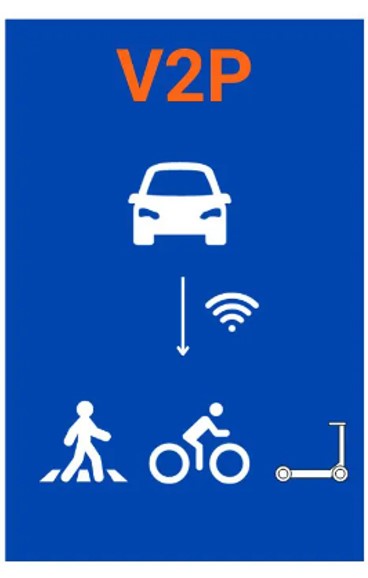Search
- 07/23/2024
V2X: Revolutionizing Transportation through Vehicle-to-Everything Communication
V2X (Vehicle-to-Everything) is a cutting-edge transportation system that harnesses the power of wireless communication to connect vehicles, pedestrians, and road infrastructure. Encompassing V2V, V2I, V2P, and V2N communication protocols, V2X enables comprehensive traffic perception and cooperative control through real-time information sharing. This transformative technology paves the way for enhanced road safety and improved traffic efficiency.
With the gradual popularization of connected cars, this function can greatly improve the degree of vehicle intelligence and gradually become an indispensable part of the “smart cockpit”. This article will separate in two segments: firstly, the concept of V2X and related applications, and then further explore the technical aspects and trends from the R&D perspective.
V2X types for IoV
At the heart of V2X lies the Telematics Control Unit (TCU), the onboard communication device responsible for exchanging traffic data. Through V2V communication, vehicles gain real-time insights into the position, speed, direction, and braking status of surrounding vehicles. This enables proactive collision avoidance maneuvers, such as adaptive deceleration or lane changes by anticipating potential hazards. V2I communication, on the other hand, facilitates seamless interaction between vehicles and road infrastructure elements, including traffic signals and electronic toll systems. By accessing traffic control and road condition information, vehicles can optimize their routes and enhance overall traffic flow.
Furthermore, V2P communication empowers vehicles to detect pedestrian presence and movement intentions, minimizing the risk of pedestrian accidents. V2N communication, in contrast, grants vehicles access to cloud-based services, providing them with broader traffic information and navigation assistance. The proliferation of V2X technology will profoundly impact the transportation industry, paving the way for a safer, more efficient, and intelligent transportation ecosystem.
|
|
V2V (vehicle-to-vehicle) |
|---|---|
| The exchange of data between vehicles. This technology allows vehicles to share information such as speed, position, and direction, enabling them to detect and avoid potential collisions, coordinate travel routes, and maintain a safe distance. By establishing real-time connectivity between vehicles, V2V improves situational awareness and helps prevent accidents, alleviate traffic congestion, and save fuel. V2V is the core technology of ADAS and AD, enabling vehicles to make informed decisions and react to road conditions. | |
|
|
V2I (vehicle-to-infrastructure) |
| V2I enables vehicles to interact with various elements of the road, such as traffic lights, street signs, and sensors on the road. This connectivity gives vehicles access to important information such as traffic light status, speed limits, road conditions, and whether there are obstacles or construction zones. By integrating this data, V2I communication technology can help alleviate traffic congestion, optimize traffic light timing, and improve overall traffic system efficiency. In addition, V2I communication provides valuable input to ADAS and AD vehicles, contributing to safer and more efficient navigation. | |
|
|
V2P (vehicle-to-pedestrian) |
| V2P focuses on the interaction between a vehicle and a pedestrian, cyclist, or other vulnerable road user. This technology typically relies on smartphones, wearables, or other devices carried by pedestrians to send their location and movement data. V2P-equipped vehicles can use this information to spot and avoid potential collisions and keep road users safe. For example, when a pedestrian crosses the street, a V2P-enabled vehicle may receive a reminder to slow down or stop in time for the driver or autonomous driving system. | |
|
|
V2N (vehicle-to-network) |
| V2N connects the vehicle to a wider communication network, such as a mobile network or Wi-Fi network. This connectivity allows vehicles to access real-time traffic information, weather forecasts, route recommendations, and more to help travel more efficiently and safely. V2N also enables remote diagnostics and online updates, allowing manufacturers to detect vehicle health and provide software upgrades. In addition, V2N communication supports the construction of smart cities and connected transportation ecosystems by integrating vehicle data with other data sources such as public transportation systems and urban infrastructure. |
Table 1: V2X types for IoV (Source: EET China 2024)
The Four Pillars of Vehicle-to-Everything (V2X) Technology
V2X, a revolutionary transportation system, encompasses four core components that underpin its functionality: mobile communication technology, navigation capabilities, intelligent in-vehicle systems, and onboard diagnostics.
1. Mobile Communication Technology
At the heart of V2X lies robust and secure mobile communication technology, analogous to a smartphone connecting to the internet. Technologies like 4G/5G provide vehicles with access to the network, enabling real-time information exchange with the outside world.
2. Navigation Features
Navigation plays a pivotal role in V2X. Leveraging GPS global positioning systems and map data, it provides drivers with real-time navigation information, helping them plan optimal routes, avoid traffic congestion, and navigate unfamiliar roads.
3. Intelligent In-Vehicle Systems
Intelligent in-vehicle systems serve as the "brain" of V2X, facilitating information exchange and processing between the vehicle and the driver. Employing voice recognition, gesture control, and touchscreens, these systems offer a user-friendly interface and a wealth of in-vehicle entertainment and information services, enhancing the driving experience.
4. Onboard Diagnostics
Onboard diagnostics, akin to a vehicle's "health monitor," continuously monitors and diagnoses the vehicle's operational status. It promptly detects vehicle malfunctions and alerts the driver, enabling proactive measures to prevent accidents.
As a global leader in SiP (System-in-Package) solutions, USI leverages its deep technical expertise and innovative R&D capabilities to empower the advancement of connected cars and smart cockpits. Our comprehensive portfolio of automotive SiP modules caters to a wide range of applications. These SiP modules meet the stringent performance and reliability demands of smart cockpits and offer customers unparalleled customization flexibility.
- System Integration: Seamlessly integrating various electronic functions into a single SiP module, streamlining system design, reducing costs, and enhancing efficiency.
- Sensor Fusion and Perception Technology: Fusing and processing data from diverse sensors, providing vehicles with comprehensive environmental perception capabilities.
- Connectivity and Communication Systems: Enabling real-time information exchange between vehicles and the external world, delivering a wealth of connected services for drivers and passengers.
Continuing the above key capabilities, USI's automotive SiP modules can be further utilized in the following applications, such as infotainment systems, which provide a richer audio-visual entertainment experience for drivers and passengers. Whether it's real-time traffic updates, over-the-air software updates, or voice-activated virtual assistants, the NAD (Network Access Device) SiP module ensures that the smart cockpit is always connected and up to date with the latest technologies and services.
The Connected Car: Reshaping Transportation for the Future
User Acquisition: The Crucial Battleground in the Era of Connected Cars
The advent of connected cars has transformed vehicles into interconnected terminals, mirroring the role of apps in the mobile internet era. Consequently, the battle for users, data, and traffic has emerged as the decisive factor in the connected car arena. Unlike smartphones with frequent replacement cycles and the open nature, automobiles boast longer lifespans and a relatively closed ecosystem. This has fueled the "Car-Making Rush", where various players scramble to capture user entry points and gain first-mover advantages.
Intelligent Transportation: Building the Internet of Everything
V2X encompasses multi-dimensional connectivity between vehicles, people, and infrastructure, painting a picture of intelligent transportation where everything is connected. For instance, V2V communication enables vehicles to receive real-time road condition updates from vehicles ahead, recommending the best route. In the era of autonomous driving, your car may even proactively alert you about your off-time and pre-cool the cabin. By then, smart cars will transcend their role as mere transportation tools, becoming integrated members of society, seamlessly interacting with people, vehicles, and infrastructure.
User-Centricity: The Golden Key to the Future
User-centricity holds the key to unlocking the future. Tesla, for example, exemplifies this approach by offering free map updates, continuous enhancements to autopilot capabilities, and convenient after-sales services. Connected cars are revolutionizing the automotive industry, making it imperative to develop connected car applications that resonate deeply with users. Companies can emerge victorious in the competitive landscape by adopting a user-centric mindset and delivering exceptional products and services.
V2X (Vehicle-to-Everything) communication technology is poised to revolutionize the transportation industry, ushering in an era of safer, more efficient, and smarter mobility. As a cornerstone of intelligent transportation systems, V2X enables real-time information sharing between vehicles, pedestrians, and roadside infrastructure, dramatically enhancing road safety and traffic efficiency. At the heart of V2X lie V2V, V2I, V2P, and V2N communication protocols, working in concert to create a comprehensive network of traffic awareness and cooperative control.
As a global leader in SiP (System-in-Package) solutions, USI is at the forefront of V2X and smart cockpit development, leveraging its deep technical expertise and innovative R&D capabilities. As we embark on the journey towards the electric vehicle revolution, you should choose expertise, choose excellence, and set forth together with USI.
Keep up with top trending topic
For the latest innovation technology, application
and industry insight.
Subscribe Our Blog
For the latest innovation technology, application
and industry insight.


















